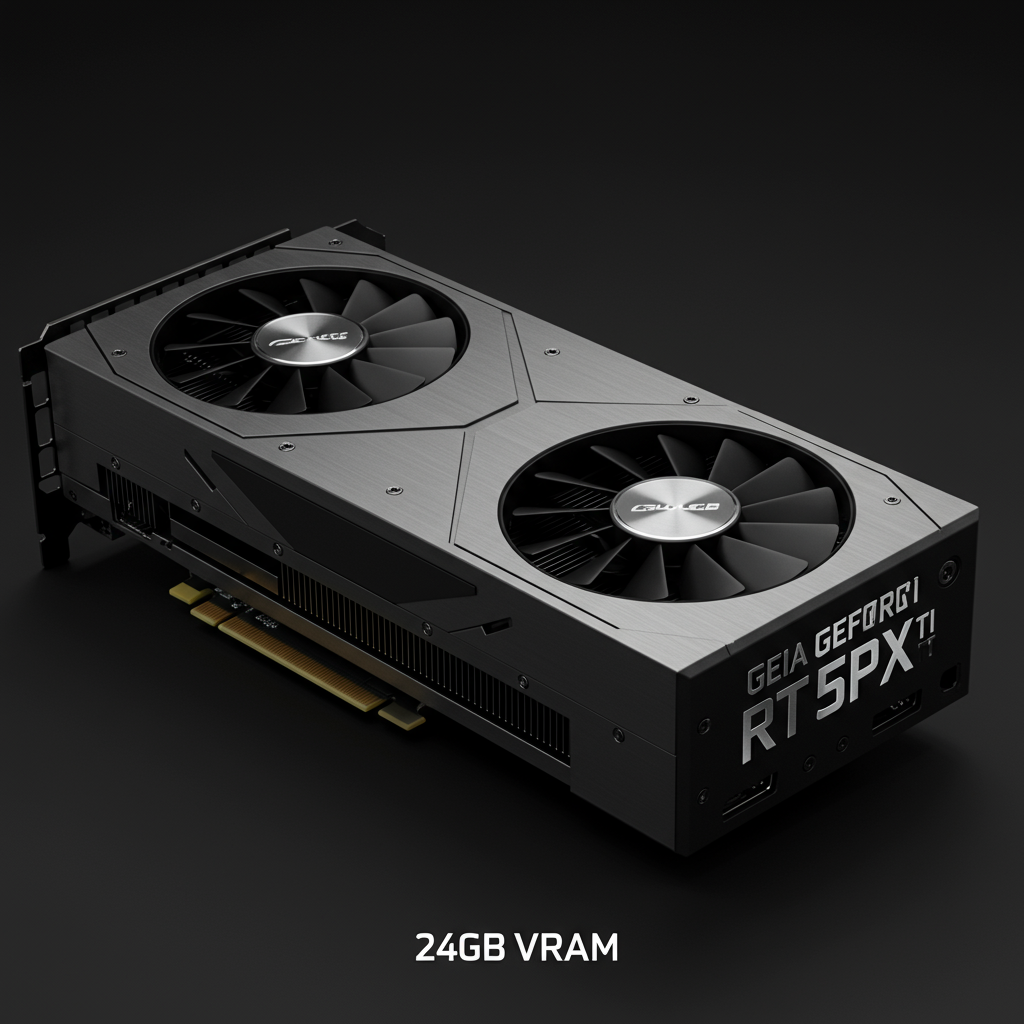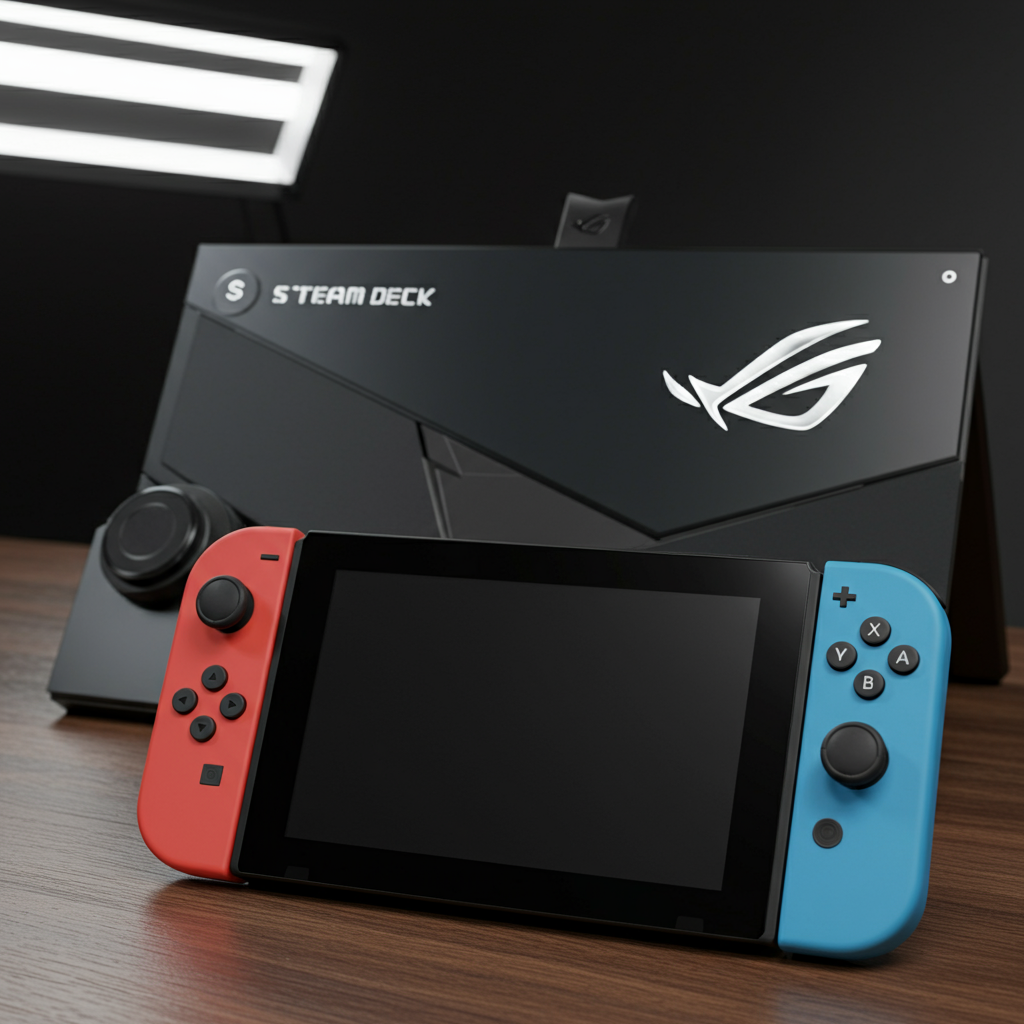Excitement is building in the PC hardware world as fresh details emerge about NVIDIA’s potential next-generation graphics cards. The latest leak, attributed to well-known hardware leaker Kopite7kimi, provides a glimpse into the rumored specifications for the NVIDIA GeForce RTX 5070 Ti super. This specific model is generating significant buzz primarily due to a substantial increase in its memory capacity, addressing a key point of discussion from the previous generation.
According to the leaked information, the potential GeForce RTX 5070 Ti SUPER could arrive packing up to 24 gigabytes of VRAM. This figure represents a remarkable 50% jump compared to the 16 GB found on the existing RTX 5070 Ti graphics card. While memory is the headline, the leak also touches upon core specifications and power requirements, painting a picture of a potentially potent offering in the high-end gaming and professional workload space.
Key Leaked Specifications for the RTX 5070 Ti SUPER
Delving into the specifics provided by the recent leak, we can outline the rumored core components and characteristics of the potential RTX 5070 Ti SUPER:
GPU Core: The card is expected to utilize the GB203-350-A1 variant of NVIDIA’s upcoming Blackwell architecture.
CUDA Core Count: It is rumored to feature 8960 FP32 CUDA cores. Notably, this is the same core count as the current RTX 5070 Ti model.
Memory Capacity: A substantial 24 GB of GDDR7 VRAM.
Memory Bus Interface: A 256-bit memory bus width.
Memory Speed: Rated at 28 Gbps.
Memory Bandwidth: This configuration results in 896 GB/s of memory bandwidth, identical to the non-SUPER RTX 5070 Ti.
Total Board Power (TBP): A reported 350W. This marks a 16% increase over the 300W TBP of the existing RTX 5070 Ti.
Power Connector: The card is anticipated to use a single 12V-2×6 (16-Pin) power connector.
PCB: The internal board designation is listed as PG147-SKU55.
These details suggest a refresh that focuses heavily on memory capacity while maintaining the core count from the preceding model.
The Significant VRAM Upgrade: Why 24GB Matters
Perhaps the most talked-about aspect of this leak is the rumored 24 GB of VRAM. This isn’t just an incremental bump; it’s a considerable upgrade designed to address a growing need in modern computing. In recent years, games, especially at higher resolutions like 4K, and demanding professional applications for AI and content creation, have become increasingly VRAM-hungry.
Consumer feedback on the RTX 40 series often highlighted concerns about VRAM capacity, particularly on models below the flagship RTX 4090, which sometimes offered similar memory amounts to the prior generation. A 24 GB frame buffer on a card positioned around the 5070 Ti tier would significantly alleviate potential VRAM bottlenecks. This massive capacity boost is reportedly enabled by NVIDIA’s move to 3 GB (24 Gb) GDDR7 memory modules across the GeForce RTX 50 series lineup.
For gamers targeting maximum settings at 4K resolution, or those working with large datasets for AI model training or complex video editing projects, 24 GB of VRAM provides substantial headroom. It allows for larger textures, more complex scenes, and bigger AI models to reside directly on the GPU, leading to smoother performance and faster processing times.
Performance Potential Despite Core Count Consistency
While the RTX 5070 Ti SUPER leak indicates the same 8960 core count as its predecessor, this doesn’t necessarily mean performance will be static. The rumored increase in Total Board Power to 350W is a key factor here. A higher power limit typically allows a graphics card to sustain higher clock speeds for longer durations or reach peak frequencies more aggressively.
Even without an increase in the number of processing cores, elevated clock speeds enabled by the expanded power budget can translate directly into performance gains in real-world applications and games. This strategy, relying on higher clocks via increased power rather than purely more cores, would be a departure from NVIDIA’s typical “SUPER” or “Ti” refreshes, which often feature both core count increases and higher clocks. However, a 350W TBP is substantial for this tier and suggests NVIDIA is giving the GB203-350-A1 plenty of thermal and power headroom to stretch its legs. This higher power draw also implies that robust cooling solutions will be essential for achieving optimal performance, likely requiring substantial aftermarket cooler designs.
Positioning in the Rumored RTX 50 SUPER Lineup
The rumored NVIDIA GeForce RTX 5070 Ti SUPER isn’t expected to arrive in isolation. Leaks suggest it’s part of a broader “SUPER” refresh planned for the Blackwell-based RTX 50 series. This refresh is also expected to include an RTX 5070 SUPER and potentially an RTX 5080 SUPER.
Preliminary leaks provide some context for these other rumored cards:
RTX 5070 SUPER: Believed to use a GB205 GPU core with 6400 cores (an increase from the standard 5070’s 6144). It’s rumored to feature 18 GB of GDDR7 memory on a 192-bit bus with a 275W TBP. This model appears to follow the more traditional SUPER upgrade path with both core and VRAM increases.
RTX 5080 SUPER: Expected to use a GB203 GPU core, potentially with 10752 cores (same as a rumored standard 5080). It’s also rumored to sport 24 GB of GDDR7 VRAM on a 256-bit bus, but with a faster 32 Gbps memory speed resulting in a higher 1024 GB/s bandwidth. Its TBP is rumored to be 400W+.
Comparing the rumored 5070 Ti SUPER to these siblings, its 24 GB VRAM stands out, matching the rumored high-end 5080 SUPER, but its memory bandwidth and core count place it distinctly below that model. Its position relative to the 5070 SUPER highlights the VRAM boost as its primary differentiating factor over its non-SUPER counterpart, unlike the 5070 SUPER which gains both cores and VRAM.
Pricing Expectations and Release Window
The leaked specifications don’t come with official pricing or launch dates, as this information is still based on rumors. However, speculation suggests the RTX 5070 Ti SUPER could launch around the same price point as the current RTX 5070 Ti, which was $749 USD at launch. Maintaining this price while offering a 50% VRAM increase would represent improved value for consumers, assuming performance increases align favorably.
As for availability, the consensus from various reports points towards a potential launch for the RTX 50 SUPER lineup sometime in early 2026, with CES 2026 often cited as a possible announcement window. However, this timeline remains subject to change as it is based on supply chain rumors and leaker predictions, not official statements.
Summary of Rumored RTX 5070 Ti SUPER vs. RTX 5070 Ti
Based on the leaked specifications, here’s a quick comparison of the potential RTX 5070 Ti SUPER against the existing RTX 5070 Ti:
GPU Core: Both GB203 variants (350-A1 vs 300)
Core Count: Same (8960)
VRAM Capacity: 24 GB (vs 16 GB) – 50% Increase
Memory Type: Both GDDR7
Memory Bus: Same (256-bit)
Memory Speed: Same (28 Gbps)
Memory Bandwidth: Same (896 GB/s)
Total Board Power: 350W (vs 300W) – 16% Increase
Power Connector: Both single 12V-2×6 (16-Pin)
This side-by-side view clearly highlights the VRAM capacity and power draw as the primary rumored differences for the RTX 5070 Ti SUPER model.
Frequently Asked Questions
What are the key rumored specifications for the NVIDIA RTX 5070 Ti SUPER?
Based on recent leaks, the NVIDIA RTX 5070 Ti SUPER is rumored to feature the GB203-350-A1 Blackwell GPU with 8960 CUDA cores. The most significant rumored specification is the large 24 GB of GDDR7 VRAM on a 256-bit bus, operating at 28 Gbps for 896 GB/s bandwidth. It is also expected to have a higher Total Board Power of 350W, up from 300W on the RTX 5070 Ti.
Is the RTX 5070 Ti SUPER’s rumored 24GB VRAM a significant upgrade for gaming or AI?
Yes, the rumored 24 GB VRAM is considered a major upgrade. It provides a 50% increase over the 16 GB on the current RTX 5070 Ti. This large memory capacity is particularly beneficial for demanding tasks such as gaming at high resolutions (like 4K) with ultra textures, running complex AI models, and handling large datasets in professional content creation applications. It helps prevent performance bottlenecks caused by insufficient video memory.
When is the NVIDIA RTX 50 SUPER series, including the 5070 Ti SUPER, expected to launch?
While NVIDIA has not made any official announcements, rumors and supply chain reports suggest the NVIDIA RTX 50 SUPER series, which is expected to include the RTX 5070 Ti SUPER, could launch sometime in early 2026. Industry speculation often points to a potential reveal around the time of CES (Consumer Electronics Show) in January 2026. However, this timeline is preliminary and subject to change.
Conclusion
The leaked specifications for the NVIDIA GeForce RTX 5070 Ti SUPER paint a picture of a graphics card primarily focused on addressing the increasing demand for video memory. The rumored jump to 24 GB of GDDR7 VRAM is a substantial upgrade that could make this card a compelling option for enthusiasts engaging in high-resolution gaming, AI development, or intensive content creation. While the core count may remain consistent with its predecessor, the higher 350W TBP suggests potential for improved clock speeds and overall performance.
As these details are based on unconfirmed leaks, they should be viewed with cautious optimism. However, if accurate, the RTX 5070 Ti SUPER appears poised to be a powerful addition to the upcoming Blackwell lineup, offering significant VRAM capacity at what is speculated to be a competitive price point relative to its rumored capabilities. The tech community eagerly awaits official word from NVIDIA regarding the RTX 50 series refresh.




